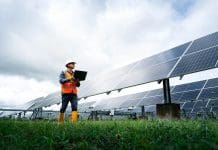Emma Arnold, technical director at WYG, discusses how the Environmental Social Governance can and will bring real tangible benefits to infrastructure projects both financially and reputationally
Issues such as, contaminated land, waste, air, noise, energy and carbon, water, and product lifecycles for example, to the emergence of social issues such as, brand reputation, human rights, modern slavery, gender equality, renumeration, supply chains, conflict minerals and health and safety, and the important role of corporate governance and behaviour in regards to these issues, highlighting examples of poor governance that contribute to lawsuits and anti-bribery and corruption claims. And so, Environmental Social Governance (ESG) has emerged.
In just the last twelve months, you would need to have had your head in the sand to have missed the exponential growth of Environmental Social Governance issues reaching the global media – from the Burberry Waste Incineration Scandal (worth noting they are not the only fashion brand to do this!), Rang-Tan highlighting the perils of palm oil deforestation and David Attenborough’s impassioned pleas to encourage the decrease in single use plastics usage, to name but a few.
But what do these examples have to do with your infrastructure project?
Issues like these breaking in the global media can garner significant influence over the perception of projects and the companies involved, which can lead to less competition for funds or even investors pulling out of high-profile projects or geographies. When added to the more traditional cause of project delays caused by public opposition, legal regime around permitting, land acquisition and resettlement issues and lack of management, communication and transparency of public concerns… all can lead to lengthy and costly legal challenges and project delays, which hit projects financially or worse, make them unviable.
Whatever your personal views are about the environment or even if you are in the Donald Trump “climate change is a myth” camp, this is entirely up to you but, ignoring the ESG implications for your project will be at its peril!
Environmental Social Governance has been in existence since 2003, but there is still a dangerous misconception that it is just a “nice to have”, a “tick box exercise” or something that can be shoehorned into a metric. However, these views are outdated and potentially hazardous. To ensure the success of your project, ESG must be front and centre at the outset of your project.
This year’s global risk report, published by the World Economic Forum, stated that the top four global economic risks in terms of likelihood or impact magnitude are all environmental – extreme weather events; failure of climate change mitigation and adaptation; natural disasters and water crisis. ESG helps assess the environmental and socials risks, and more importantly opportunities and ensures the project has the appropriate environmental and social governance in place.
There are clear and tangible financial risks for project managers and business leaders lagging behind in the safeguarding of their projects and companies for the future, especially when considering it has been estimated that climate change and storm events have a global price tag of nearly $2trillion. And that recent news reports stated that a “patchy record on environmental, social and governance (ESG) issues” was one of the reasons holding back share prices of the four big mining companies.
The infrastructure industry is growing exponentially. Over the last five years, the number of major projects that broke ground grew by 77% and the average project value increased by 19% (Source: McKinsey 2018 Major project delivery and digital transformation report). The long term nature of major projects often means that ESG issues and associated data will be outdated by the time the project breaks ground or gets finalised.
It is imperative to assess Environmental Social Governance risks and opportunities at the inception of a project and develop a lifecycle analysis platform allowing for the continual assessment and update of information from project inception through planning, construction, operation and even assessing the risks associated with asset retirement.
Environmental Social Governance management should be on the agenda for every meeting so that risks and opportunities can be continually tracked. In the age of digital transformation, this process is significantly aided by the use of smart technology, artificial intelligence and data platforms, all of which are likely to have a significant impact on the assessment and management of ESG risks going forward – the problem, analysts may find, will be what platform to use, and the ownership and security of the data. However, with the use of technology, multiple data sources can now be brought together easily and assessed by project stakeholders, allowing trends to be assimilated and acted upon in real time.
Environmental Social Governance due diligence should be change driven, not just identifying risks, but applying the “so what” factor and making recommendations and road maps of what changes can be made throughout the lifetime of the project to increase ESG performance, reduce risk and increase value. However, to take real value from this process, ESG professionals will need to be varied, have different skill sets and come from different backgrounds and companies depending on the risk identified and being managed (e.g. resettlement vs water resources). These professionals need to be retained throughout the project lifecycle and not just at the start, during the pre-investment stage, so that risks can be managed and opportunities realised early to minimise, control and manage any possible project delays.
Environmental Social Governance issues are diverse and will be bespoke not just to each project and geography, but will also likely change throughout the project lifecycle. This is why a “one size fits all” approach is very dangerous and singularly assessing the full breadth of ESG issues can also be prohibitively expensive and unnecessary. ESG due diligence and management should instead be undertaken by screening the issues and scoping out which will have the greatest impact on the project from the outset. It is also important to workshop this screening exercise with other project advisors so that the multi-disciplinary implications of any issues and opportunities can be understood by the wider project team, discussed and fully assimilated.
Environmental Social Governance issues will also be both quantitative and qualitative in nature, and the deployment of probabilistic modelling of the financial implications (both positive and negative) of these issues can help project managers define lifecycle costs and manage uncertainty.
There is no doubt that a poor focus on ESG will cost stakeholders money, either via share price stagnation, reputational damage, project delays or funders pulling out. But if managed and most importantly communicated well, it can and will bring real tangible benefits to infrastructure projects both financially and reputationally via the positive benefits it will bring to communities and the environment. Why then would you even hesitate to make ESG front and centre of everything you do?
Emma Arnold
Technical director














